Do you want to travel Madagascar independently, keeping an eye on your budget? Meet your new best friend, the taxi brousse.
What is a taxi brousse?
If you’ve travelled around Africa, you’ll be familiar with the concept of bush taxi. These minibuses, packed to the gills with people and produce, shuttle from one city to the other, from market towns to remote country hamlets.
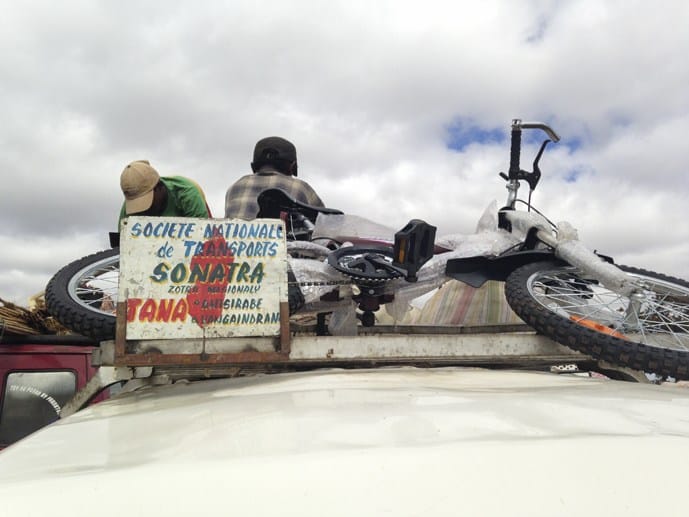
Taxi brousses are the Malagasy version of bush taxis. They are slow and uncomfortable, but they are often the only affordable alternative to chartering your own 4X4. You will have little or no legroom, and children sleeping on top of you, but you’ll be saving a ton of money.
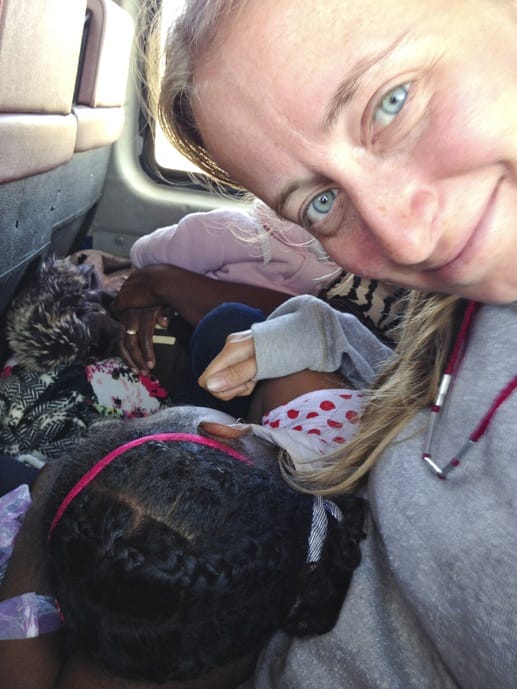
For instance, Antananarivo (Tana) – Antsirabe is 8,000 to 10,000 Ariary – around 3 euro. The same trip in a chartered car or 4X4 would be at least ten times that. Plus, in a taxi brousse you’ll be riding with locals, playing with kids and trying street food, with a chance to practice your French if you wish.
How does it work?
Pretty much every city in Madagascar has a taxi brousse station. They range from huge, chaotic affairs like the ones in Tana and Fianarantsoa, to a couple of shacks on the roadside, to nothing at all like in Ranohira (gateway to Isalo National Park). So, what to do?
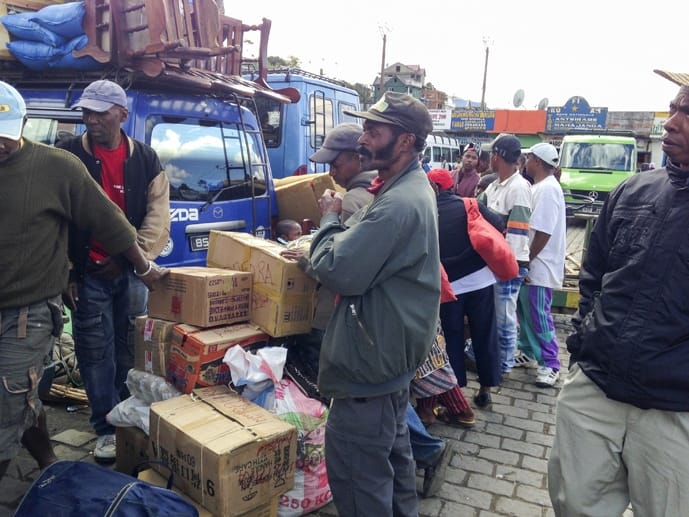
You’ll notice that taxi brousse stations are surrounded with huts selling tickets, known in French as guichets. Taxi brousse drivers own the vehicle, and in turn are organised in cooperatives. Huts represent cooperatives, not destinations. You walk up to the hut of your choosing, ask for your destination and buy your ticket. Prices are displayed so no worries about overcharging – if they try, refuse politely.
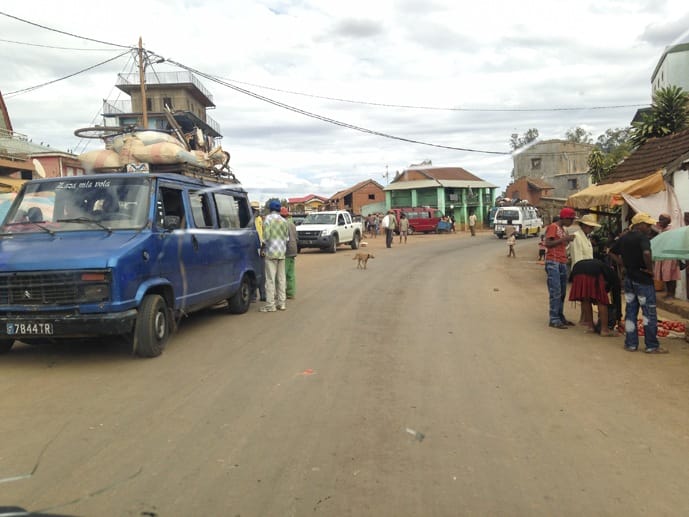
Touts are essential when there’s no station, like in Ranohira. They’ll usually find you, or you can ask your hotel or guesthouse. In that case, it’s very hard to avoid paying them a commission.

You can also reserve your ticket on the day before departure, which also allows you to choose your own seat. Don’t pay for your ticket in full, leave a deposit and always get a receipt.
Taxi Brousse Problems
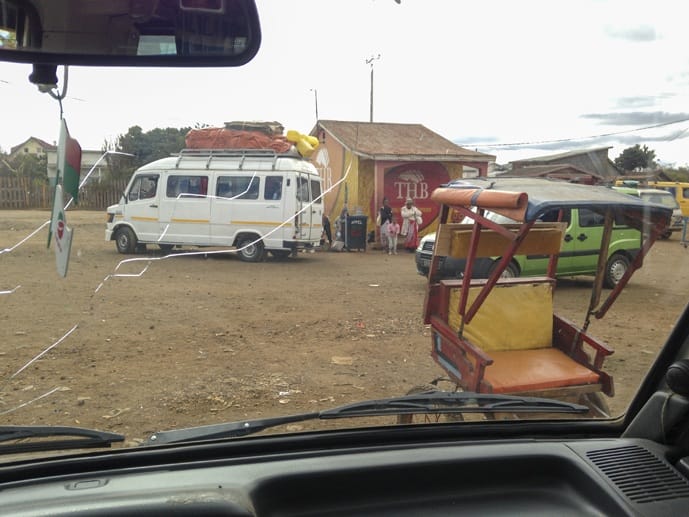
Things rarely go smoothly when it comes to taxi brousses. You’ll probably be hounded by touts, especially in cities. Before sending them away, remember that they can actually be helpful in pointing out the right cooperative booth or the first bus to depart. By all means, give them a tip if you wish, but refuse their attempt of overcharging on account of being a vazah (foreigner). And ALWAYS get a receipt.

Taxi brousses depart when full. Which can mean within ten minutes or so, or over half a day. Our average waiting time was 2 hours. To minimize that, buy your ticket directly from the driver and choose a bus with a few spare seats. Of course, comfy seats fill up first; so you can either leave early and be uncomfortable, or leave late and be (a little more) comfortable. Your choice!
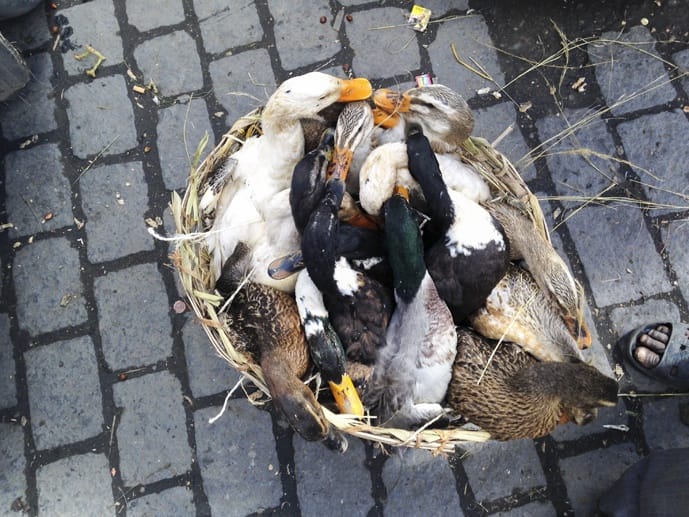
Let’s talk seats. Legroom wise, the two best seats are the ones in the front row, next to the driver. As there are no seatbelts, they are also the most dangerous. Legroom progressively decreases as you move towards the back; the last row can be downright torture for anyone over 1.70 m tall.
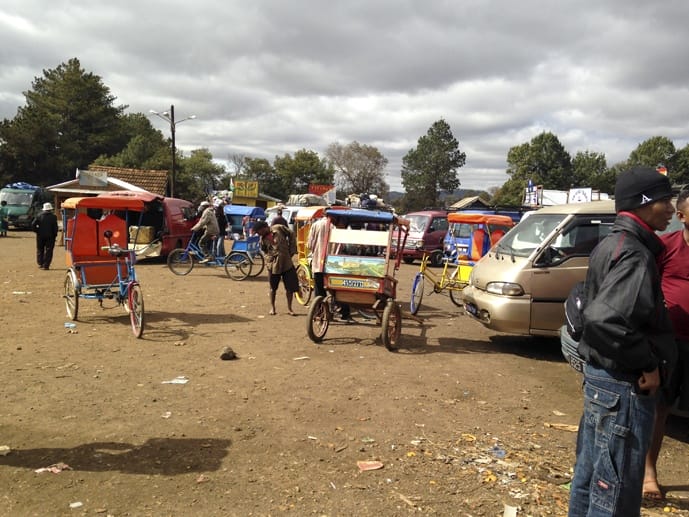
How can I survive?
Now, I can’t say travelling by taxi brousse is pleasant. It can be an interesting experience, but most of the time it’s really uncomfortable. So, why do it? Because it’s much cheaper than a 4X4. And to ride with locals. That’s about it.
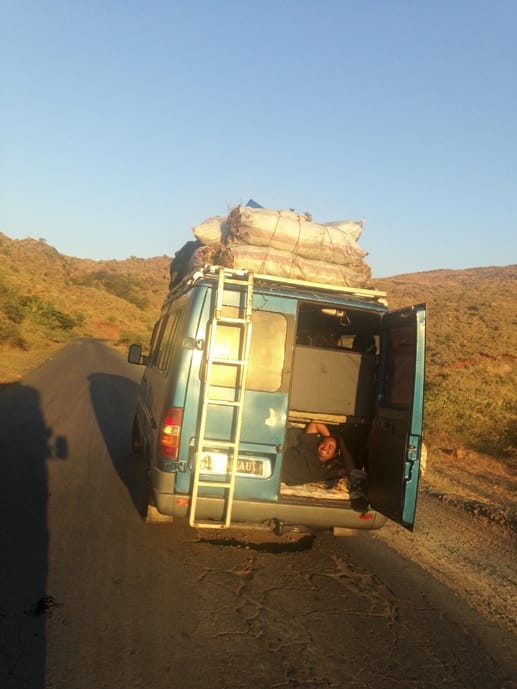
Having said that, long-distance (national) taxi brousses are usually OK; you get your own seat, the vehicles are in decent shape and only stop at major cities. Try to ask for a ‘Sprinter’, a much better and more comfortable model than Mazda or Mitsubishi minibuses.
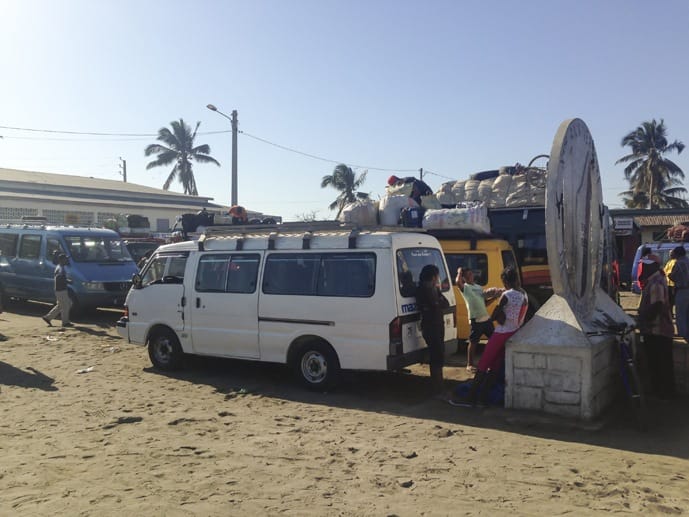
Comfort decreases along with distance travelled. Regional taxi brousses are on the verge of being unbearable, and ‘local’ ones are just terrible, with five people or more on each row. We rode on a taxi brousse that packed over fifty people in 18 seats – here’s the pic if you don’t believe me!

If you think it’s too much for you, try finding a seat on a chartered 4X4. As around hotels and tourist cafés and, usually, someone will fix you up.
Do try the taxi brousse though – at least once! Really, it’s not that bad.


This post is just hilarious. A taxi brousse is the way to go to meet the local culture and people. The photos of the kids are so sweet, and then the girl that uses you as a pillow. Just great travel experiences. Nice to share this.
How insane this looks- amazing! What a way to get to know the locals and culture!!
God, when I think about the weird and wonderful journeys we’ve made in tiny boxes with wheels it makes me both anxious and excited as even though at times the ride has been tough, and least I was seeing things as a local would see them and in the same shared discomfort 🙂
Oh my, what an adventure. I’ve found taking various forms of transportation in foreign countries tends to lead to the best stories 🙂
That sounds like a super cool experience! Not sure if it would be something I could deal with long term but for a couple weeks- why not!
Definitely sounds like quite the experience! Adventures like this always make for good stories 🙂 Love the little kids–they are so adorable, especially the boy in the jacket!
Wow, what interesting adventures you’ve taken riding these! I’m sure you’ve had some great conversations. Waiting an average time of two hours can be a bit annoying though, not to mention the discomfort with 50 people crammed into one! Well, it is definitely something to experience!
Yep, am very familiar with the taxi-brousse!! It’s an adventure indeed – I’m actually surprised I did survive my transportation while in Africa!! Great photos!
Knowing my love for public transport I would love it! It reminds me system in Benin 🙂 Great advices!
The Zoren really really hates the touts!
Great survival guide! One thing I learned while riding bush taxis in Mali was to wear sturdy shoes or sandals with a thick sole. If you wear flimsy flip flops, the floor of the taxi gets super hot, which warms up the rubber in your shoes and then burns your feet. I forgot this lesson and experienced it all over again when wearing flip flops in Uganda on a matatau.
Very true! I was always wearing shoes in Mada as it was winter and cold in the morning, but will keep it in mind for future African trips!
Weird question: are these ducks still alive??
Good question Anna. My guess is no!